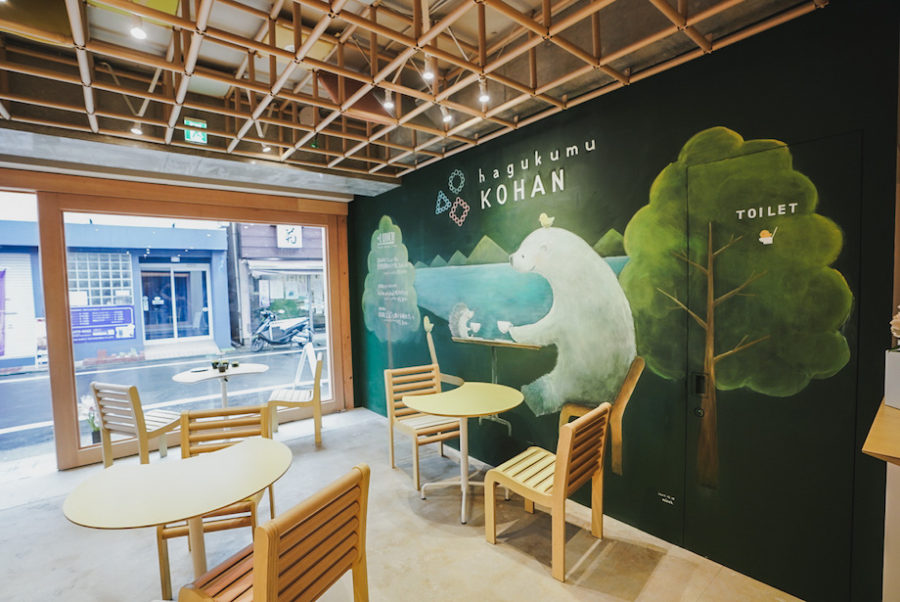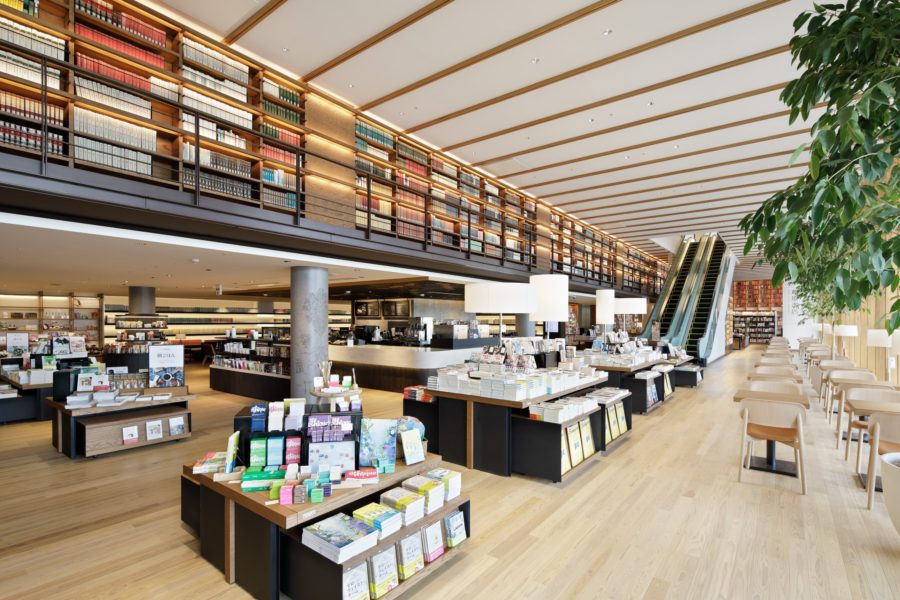
CULTURE


©︎ Jim Stephenson

©︎ Jim Stephenson
〈コピス・ワーカーズ・シェルター(Coppice Workers’ Shelter)〉は、イギリスのウェストンバート国立樹林園(Westonbirt, The National Arboretum)に、地域の人々の伝統的な大工技術などのスキルを掛け合わせて建てられたコミュニティシェルターです。
樹林園の森林管理から出る間伐材や古いアルミの看板を活用した、2次曲面の屋根が特徴的なサステナブルな木造建築です。
森林管理事業も展開し、森の中のスタジオにて活動するイギリスの建築事務所インビジブルスタジオ(Invisible Studio)が設計しました。
(以下、Invisible Studioから提供されたプレスキットのテキストの抄訳)
イギリス・グロスタシャー州のウェストンバート国立樹木園に、有機的なフォルムのコミュニティシェルターがオープンした。
インビジブルスタジオと、木質構造のスペシャリストであるザイロテック(Xylotek)、支援が難しいコミュニティに住む数百の人々、そしてフォレストリー・イングランド(Forestry England)のボランティアとスタッフが、独自のパートナーシップを組み完成させたものである。

©︎ Jim Stephenson
その地の木と廃棄物を使用するサステナブルな建築
このプロジェクトは技術的には複雑であるが、地域の人々のもつさまざまなスキルを掛け合わせ、構想から設計、施工まで行われた。
自然とともに創造する、という行為がもたらす豊かさを実証しているプロジェクトであり、森の中に心地よく溶け込みつつ、風雨から身を守ることができる空間である。

©︎ Piers Taylor

©︎ Piers Taylor
このシェルターは、ウェストンバート国立樹木園が定期的に行っている森林管理の一環として採取された木と、敷地内の古いアルミ製看板を再利用してつくられている。
そのため、このプロジェクトのカーボンフットプリントは非常に小さく、地元で栽培・調達された木材を使用することの可能性を示している。

©︎ Jim Stephenson
地域を巻き込むデザインプロセス
デザインプロセスでは、スケッチやモデル、デジタルスキャン、大型モックアップ、現場での製作といったプロジェクトの各段階において、地域住民を巻き込むことで、プロジェクトの初期段階から高いエンゲージメントを実現した。
このシェルターは、スチームベンディング(蒸気による木材の曲げ加工)やラミネート加工、板金加工といった、地域の人々がもつ伝統的な大工技術を活用したユニークな建築である。
この独特で革新的な放物線を描く2次曲面のシェルターは、風雨から身を守りながらも周囲の自然を見渡す機会を提供する。

©︎ Jim Stephenson
一見、場当たり的にも見えるデザインだが、地域の人々を巻き込む「インクルーシブデザイン」を可能にし、このシェルターの利用者に用途に制限のない空間を提供するため、意図的に設計されている。
これにより、シェルターを利用するコミュニティはこの建築に所有感を感じ、建設に携わった人々はものづくりに誇りを感じ、次に何かを成すためのモチベーションとなるのである。

©︎ Piers Taylor

©︎ Jim Stephenson
インビジブルスタジオのピアーズ・テイラー(Piers Taylor)は次のように語る。
「このコミュニティシェルターは、さまざまな革新的なプロジェクトをともに行ってきた幅広い個性を持ったチームの強みを活かす、真の共同プロジェクトとして考案された。」
「このシェルターは、インビジブルスタジオとザイロテックが共同で入札したプロジェクトである。さまざまなコミュニティの人々があらゆる面でプロジェクトに貢献することで、個人でつくるよりはるかに大きなものをつくり上げることができた。」

©︎ Jim Stephenson
コミュニティシェルターは、個人からの寄付や助成金、ウェストンバート国立樹木園のチャリティ団体(Friends of Westonbirt Arboretum)、フォレストリー・イングランドといった、さまざまな方面からの寛大な資金提供によって成立したプロジェクトである。

©︎ Johnny Hathaway

©︎ Jim Stephenson

©︎ Jim Stephenson

©︎ Jim Stephenson

©︎ Jim Stephenson

©︎ Jim Stephenson

©︎ Johnny Hathaway

©︎ Piers Taylor

©︎ Piers Taylor

©︎ Piers Taylor

©︎ Piers Taylor

©︎ Piers Taylor
以下、Invisible Studioのリリース(英文)です。
Coppice Workers’ Shelter
Westonbirt, The National Arboretum community shelter designed and built by many hands
An organically shaped community shelter has opened at Westonbirt, The National Arboretum in Gloucestershire, which is the product of a unique partnership between architects Invisible Studio, timber structure specialists Xylotek and hundreds of people from harder-to-reach community groups, as well as Forestry England volunteers and staff. While technically complex, the project was conceived, designed and constructed working alongside community participants with a range of abilities – demonstrating the mindful benefits of nature and co-creation. The result is an inclusive and protective space that sits comfortably in its woodland setting.
The shelter is made from trees that were due to be extracted from Westonbirt’s own collection as part of its routine woodland management cycle, as well as recycled old, aluminum signage from across the site. The project’s carbon footprint is therefore small, and shows what can be achieved using locally grown and sourced timber.
The design process involved high levels of engagement from the outset, using sketches, small models, digital scanning, large scale mock-ups and onsite fabrication to involve the community groups at every stage of the project. Considering the varying skillsets of the participants, the shelter provided opportunities for individuals to join in on a range of traditional green timber carpentry techniques, including steam bending, laminating and shingle making to build the unusual structure.
The distinctive and innovative hyperbolic paraboloid shape of the shelter will offer protection from the elements, while offering important views through to the surrounding woodland. The aesthetic appears to a certain extent ad hoc but it has been deliberately created this way to allow inclusive design and offer the groups who will use the shelter a space that is non-prescriptive. The community that uses the shelter will feel a sense of ownership, while those participiants involved in the build process have experienced the pride in making this project, with a postive outlook on what they can achieve next.
Piers Taylor of Invisible Studio said: The Community Shelter was conceived of a truly collaborative project, playing to the strengths of a wider team that have worked together on multiple innovative and award winning projects both at Westonbirt (with the Tree Management Centre) and also with projects at Hooke Park and elsewhere. The shelter was won as a joint bid between Invisible Studio and Xylotek, and set up so that many others from a variety of community groups would work alongside the consultants on every aspect of the project, creating something ultimately far greater than a project from a single hand.
The community shelter has been funded through generous donations from a range of sources including individuals and grants, Friends of Westonbirt Arboretum charity and investment from Forestry England.
Architect: Invisible Studio
Contractor: Xylotek
Client: Forestry Commission, Westonbirt Arboretum.
「Coppice Workers’ Shelter」Invisible Studio 公式サイト
http://www.invisiblestudio.org/selected_work/coppice-workers-shelter/





![[大阪・関西万博]シグネチャーパビリオン紹介_石黒 浩氏](https://magazine-asset.tecture.jp/wpcms/wp-content/uploads/2025/04/08214106/rIMG_1280-1-900x675.jpg)

![[大阪・関西万博]坂茂建築設計の〈ブルーオーシャン・ドーム〉](https://magazine-asset.tecture.jp/wpcms/wp-content/uploads/2025/05/21160657/DJI_0311_HiroyukiHirai_credit_required-900x594.jpg)

